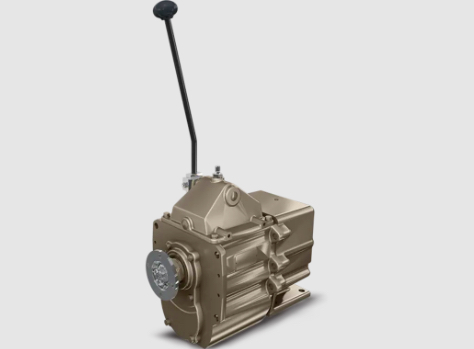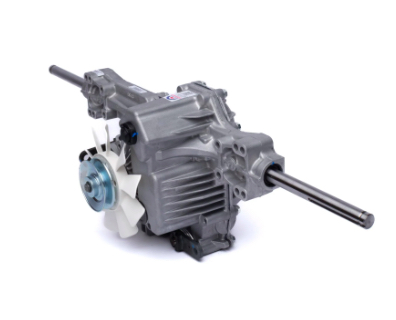John Deere Hydrostatic Transmission Problems can be daunting to troubleshoot and fix. With the help of these helpful tips and solutions, however, we can learn how to diagnose and repair common transmission issues accurately. By understanding the underlying causes and effects of these problems, we can keep our John Deere Hydrostatic Transmissions running smoothly.
⚡️Another article: John Deere X570 Problems
Diagnosing and Repairing John Deere Hydrostatic Transmission Problems

Understanding the underlying causes and effects of John Deere Hydrostatic Transmission Problems is essential for accurately diagnosing and repairing them. In this guide, we will explore the common issues associated with this type of transmission and provide solutions for addressing them. From identifying symptoms to finding and replacing faulty parts, we will give you the tools and information you need to keep your John Deere Hydrostatic Transmission running smoothly.
| Problem | Solution |
|---|---|
| Leaking Fluid | Check and replace seals and gaskets as needed. |
| Noisy Transmission | Lubricate gears, bearings, and other moving parts. |
| Fluid Overheating | Check for clogs, clean or replace filters, and inspect hoses for signs of wear. |
| Slow Response | Check for blockages, replace faulty parts, or adjust the transmission linkage. |
Stuck in Gear
One of the most common John Deere Hydrostatic Transmission Problems is when the transmission gets stuck in one gear, preventing it from shifting properly. This can be caused by a buildup of dirt and debris in the information or by worn-out seals or gaskets. To fix this issue, checking the transmission fluid level is important, ensuring it is full. If the liquid level is low, it is necessary to top it off and clean the transmission filter. If the fluid level is normal, then it is likely that the seals or gaskets are worn out and need to be replaced.
Loss of Power
Another common issue is losing power or an inability to maintain speed. A faulty shift solenoid can cause this, a clogged transmission filter or worn-out transmission oil seals. To fix this, it is important first to check the shift solenoid and transmission filter to ensure they are working properly. If they are functioning correctly, then it is likely that the oil seals need to be replaced.
Noisy Operation
Noisy operation is a common symptom of John Deere Hydrostatic Transmission Problems. A worn-out output shaft bearing, a faulty shift solenoid, or an accumulation of dirt and debris in the transmission can cause this. To diagnose this issue, inspecting the output shaft bearing and the shift solenoid is important. If they appear to be working correctly, then cleaning the transmission and replacing the transmission filter is necessary to prevent the accumulation of dirt and debris.
Key Takeaways on Diagnosing and Repairing John Deere Hydrostatic Transmission Problems
- Understand the underlying causes and effects of John Deere Hydrostatic Transmission Problems to diagnose and repair them accurately.
- Common transmission issues include leaking fluid, noisy operation, and slow response.
- To fix these issues, check and replace seals and gaskets, lubricate gears and bearings, clean or replace filters, and inspect hoses for signs of wear.
- A buildup of dirt and debris, a faulty shift solenoid, or worn-out seals and gaskets can cause specific issues such as a stuck gear or loss of power.
- A worn-out output shaft bearing, a faulty shift solenoid, or accumulating dirt and debris can cause a noisy operation.
- To diagnose these issues, inspect the output shaft bearing and the shift solenoid and clean the transmission to prevent the accumulation of dirt and debris.
📢Read also: John Deere Regeneration Problems
Tips and Strategies for Fixing John Deere Hydrostatic Transmission Problems
Having a working knowledge of John Deere Hydrostatic Transmission Problems and the underlying causes and effects is essential for accurately diagnosing and repairing them. Knowing what to look out for and the appropriate steps can save time and money while ensuring it is done correctly the first time. Here are some tips and strategies to keep in mind when troubleshooting and repairing John Deere Hydrostatic Transmission Problems:
- Check and replace seals and gaskets.
- Lubricate gears and bearings.
- Clean or replace filters.
- Inspect hoses for signs of wear.
- Inspect the output shaft bearing and the shift solenoid.
- Clean the transmission to prevent the accumulation of dirt and debris.
Following these tips and strategies ensures your John Deere Hydrostatic Transmission is running smoothly and reliably. With the right approach and knowledge, you can diagnose and repair any John Deere Hydrostatic Transmission Problems quickly and efficiently.
Conclusion: A Comprehensive Guide to Diagnosing and Repairing John Deere Hydrostatic Transmission Problems
John Deere Hydrostatic Transmission Problems can be daunting and complex, but with the right knowledge, you can diagnose and repair them quickly and reliably. Knowing what to look out for and the appropriate steps to take is essential for accurately diagnosing and repairing John Deere Hydrostatic Transmission Problems. By following the tips and strategies outlined in this article, you can ensure your John Deere Hydrostatic Transmission is running smoothly and reliably for years.
🚨You may be interested in: John Deere X758 Problems
